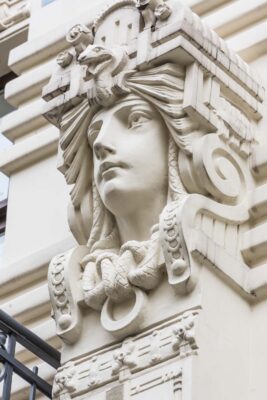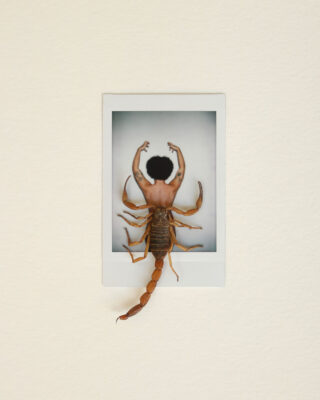
On View
Bring On The Funk
A new show at the Museum of Art and Design celebrates the humor, sex, and edginess of the Funk movement in ceramics.
Stroll into the Carolyn E. and Matthew Bucksbaum Gallery at the Museum of Art and Design, and you might be excused for feeling like you’re in the world’s creepiest elementary-school art fair. There’s a cartoonishly goofy typewriter, rendered in a very midcentury olive green. But instead of a sleek plastic or metal exterior, it has the lumpy texture of a clay bowl made by a preschooler. And instead of keys, it sports unnervingly realistic human fingertips with creepy polished coral nails.
Nearby, there’s an old-school rotary phone. It, too, is made of clay. But don’t look too closely at the handset—it resembles a certain phallic appendage . . . except for the mouthpiece, which looks like a literal mouth. In the center of the dial is a second set of lips, in the same pinkish-red tones—though this set tends to be seated somewhat lower on the human body and tends to be covered by panties.
Both pieces, by ceramicist Robert Arneson, speak to technology’s role in the most primitive, base, fleshy pursuits: phone sex, love letters, the tactile pressure of fingers on keys and the erotic whispers of dirty words into a receiver.
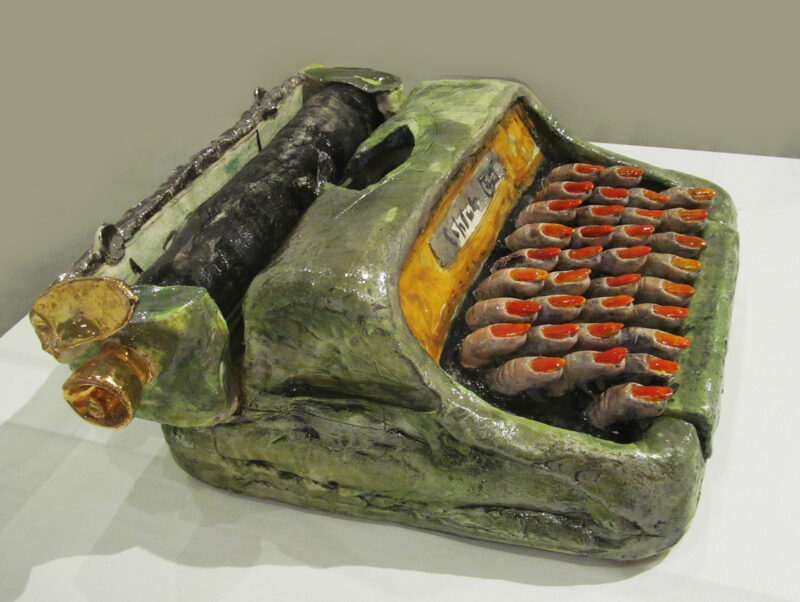
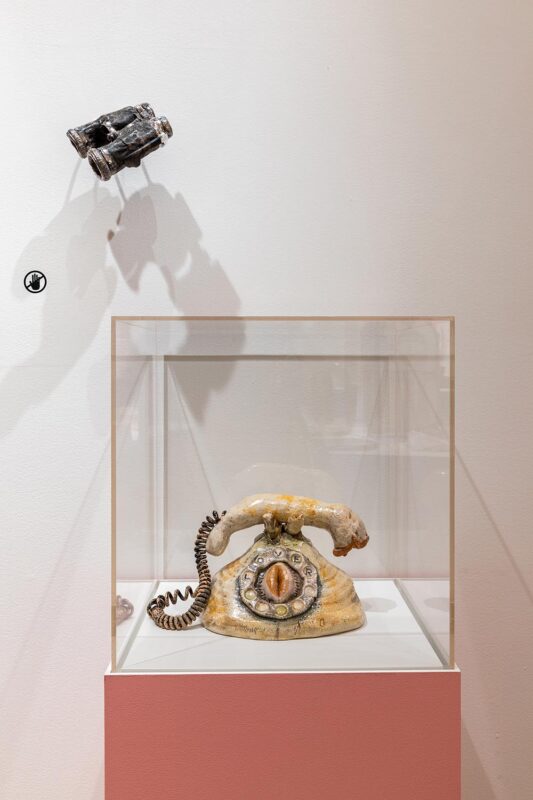
Arneson’s work helped spearhead the Funk Ceramics movement, which began on the West Coast—primarily in the Bay Area—in the 1960s and embraced sex, silliness, irony, and figurative forms. As the rest of the art world looked to abstraction, minimalism, and cool conceptualism, Funk was all about the messiness of being human: the scatological and squishy and funny. Featuring over 40 works by 26 artists, Funk You Too!: Humor and Irreverence in Ceramic Sculpture. presents work from the original Funk Ceramics movement along with those by a new generation. The youngsters of the movement are equally interested in humor, representation, and subversion, but with a wider variety of backgrounds and contemporary political viewpoints. As associate curator Barbara Paris Gifford notes, “This is really a survey of irreverence in ceramics.”
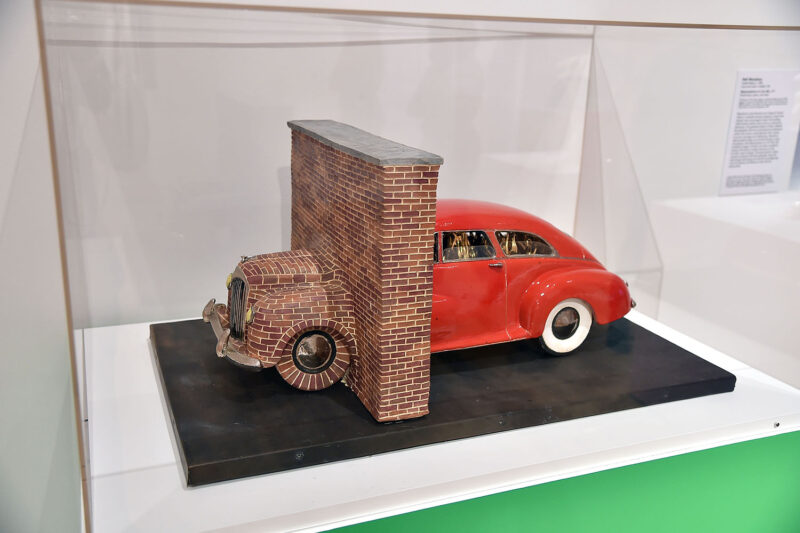
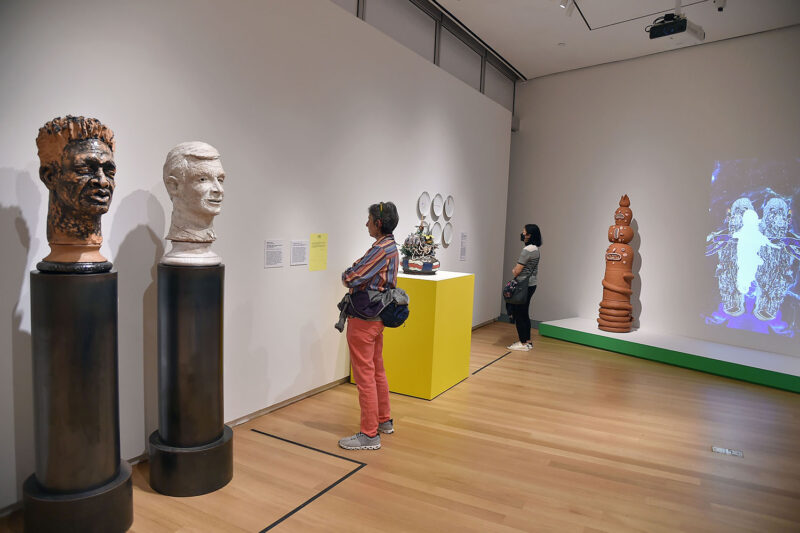
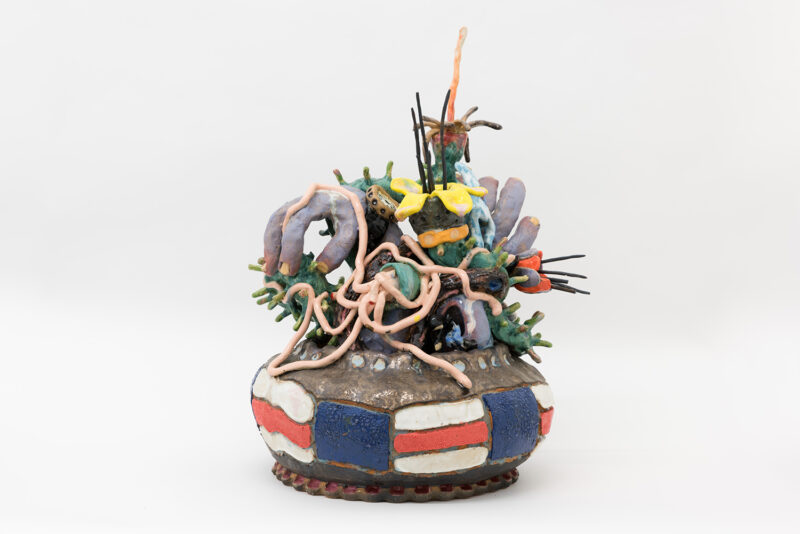
One of the most exciting pieces is by Yvette Mayorga (born in 1991), whose round, pink, cakelike Surveillance Locket invokes the Polly Pocket toys of the artist’s girlhood. It depicts an over-the-top, sugary rococo fantasy of a fancy-lady house, with frosting-like piping and gold detailing everywhere, along with chutes and ladders and long-lashed cartoon eyes. It’s the American Dream . . . or is it? “For a domestic in these home settings, there are always eyes looking at the immigrant in a suspicious way,” Gifford pointed out. “There is always surveillance.”
Mayorga’s work seems in dialogue with that of the 1960s artist Sandra Shannonhouse, sitting next to it. Shannonhouse played with the resemblance of pottery glaze to fondant, and made big, mouth-watering boxes of slightly sinister fake candy. In the words of Angelik Vizcarrondo-Laboy, an independent curator based in L.A. who put this show together, “Her feminine, domestic and cute pursuit remains a flippant statement against the macho aesthetics that dominated the ceramics world.”
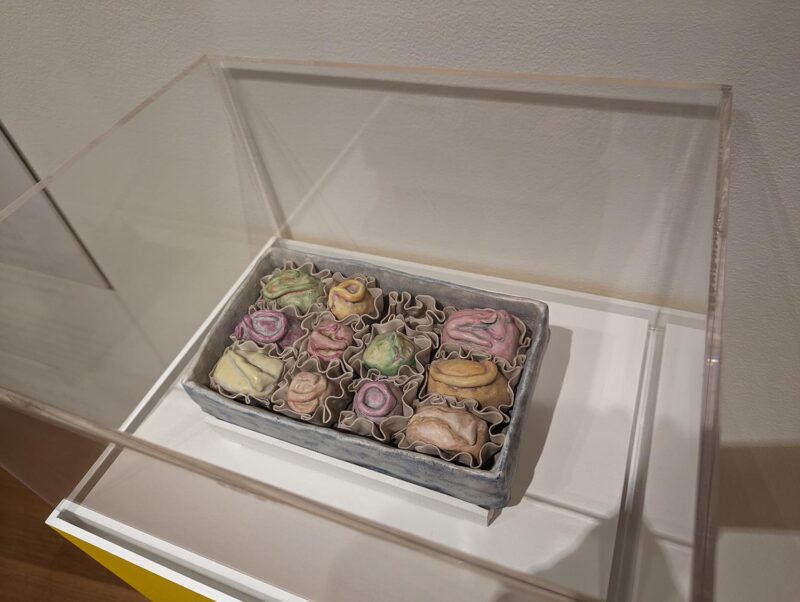
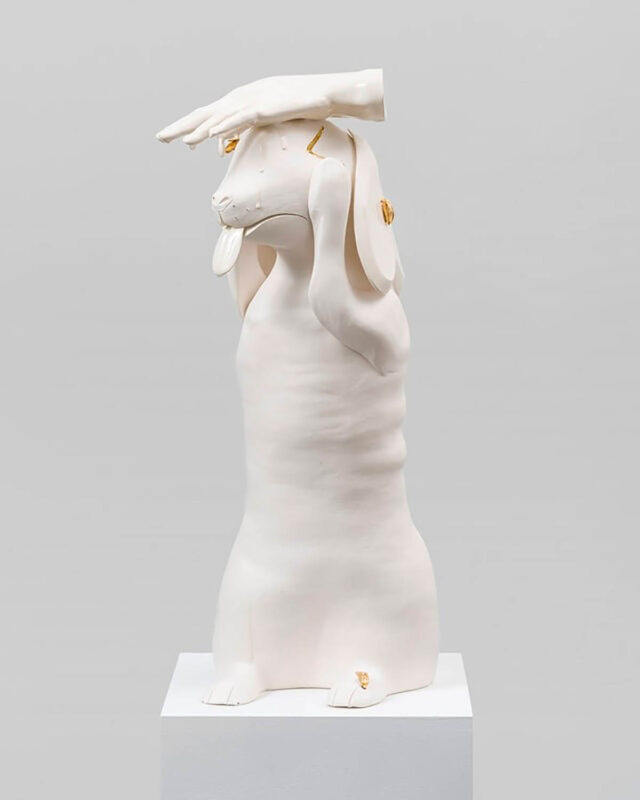
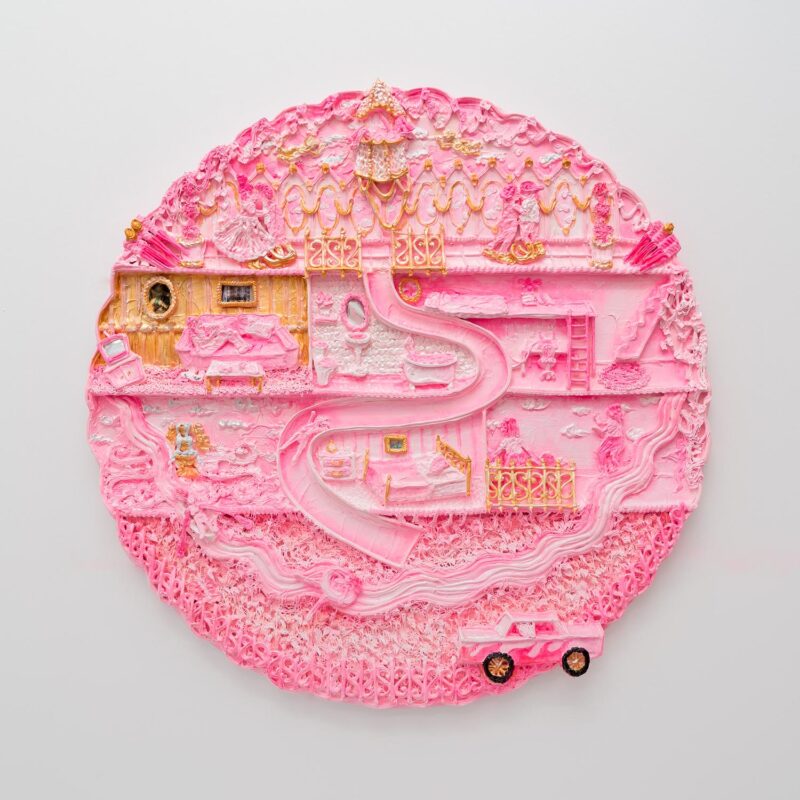
Other pieces in the show address race relations, colonialism, and queerness with grace and biting humor. For example, a 2019 piece called Don’t Touch My Hare (by Alex Anderson, a Black and Asian American artist) shows a hand aggressively petting an aggrieved bunny’s head. Is the hand caressing the rabbit or pushing it down? First we laugh; then we realize something isn’t quite right here. Referencing Solange Knowles’s 2016 hit of the same name, we are forced to think about the infantilization and presumption with which white folks treat Black hair and Black bodies. With a style that is “very approachable, very spoonful-of-sugar,” as Gifford puts it, we are nevertheless forced to ask some hard questions. And it’s this duality that makes us want to linger here in this roomful of clay misfits.
